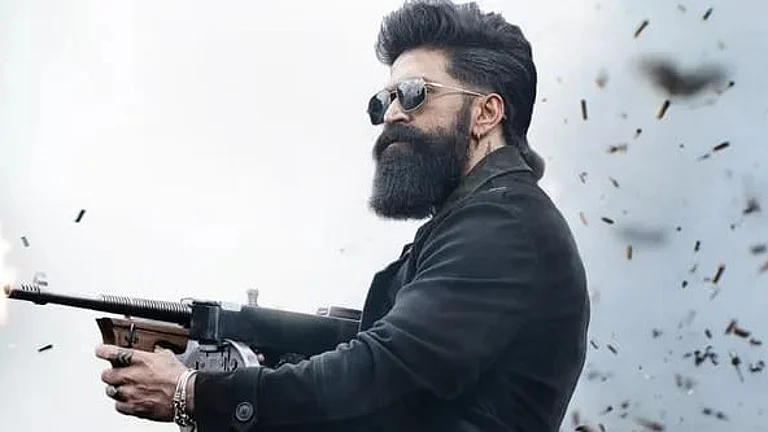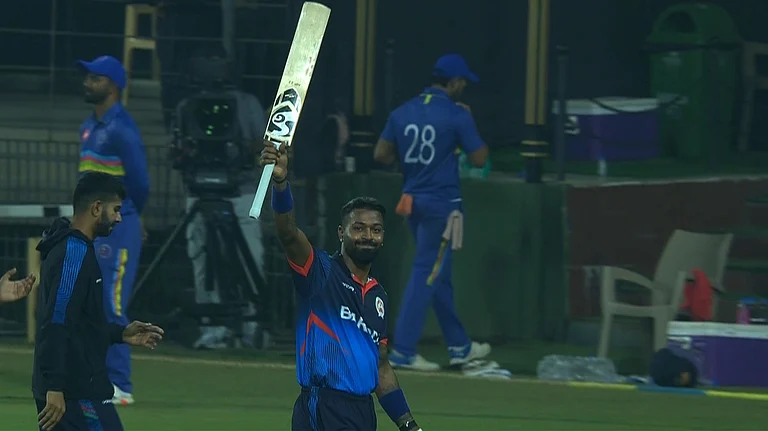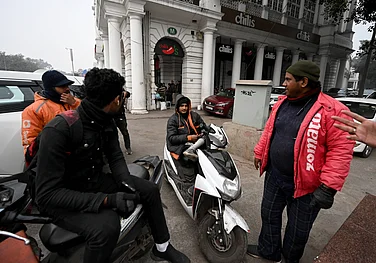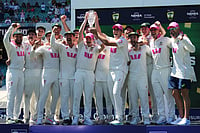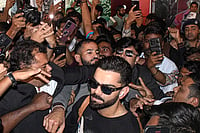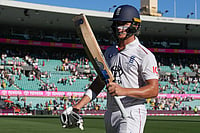Art and performance’s form and content are fluid. We take what we want, make what we want of it and pour it back into the flow. This produces a multiverse, not a universe, where experience and expression are in constant interaction, creating versions of realities, allowing for a more complete comprehension of one’s experience of reality and finally the truth about something. Hip-hop in India and around the world is moving out of the confines of a particular region, language, community or class of people. It is defining itself into an inclusive community and culture and expanding its role and function.
India’s oral-aural communication and media multiverse ensured that poetry and song have been sites of social, cultural and political commentary, documentation, narration, protest and critique for centuries in India. During this time, both have lent and borrowed from languages, expressions and music from all over the world. There has been constant experimenting with form and content. Mutual trust between the sender and the receiver of a message is an important aspect of oral-aural communication.
When we look at any art form in India we have to keep in mind why and how the form and its content is approached in this part of the world. Be it qawwali, ghazal, jazz, pop or hip-hop or rap.
Steven Kapur or Apache Indian, the nineties-fame UK artist of Indian origin, is the name that pops up first when we begin our look at hip-hop in India. He combined reggae of Jamaican origin, the Raggamuffin, a sort of music that uses ‘sampling’ prominently, and bhangra that originated in Punjab in India. At around the same time, riding on the back of the proliferation of television and hence popular Euro-American music in India, came Baba Sehgal. By this time, a separate genre called Indipop had already been around for about three decades although it was restricted to urban areas such as the cities of Calcutta, Mumbai and Chennai. A key element of hip-hop was the televised image. Hip-hop came out of the television frame in India. It was experienced through television angles that distorted perspective.
A characteristic of the subcontinent is the spread and popularity of film music. Film music has been a dominant platform for the spread of poetry and music. It has drawn from influences across popular cultures of Europe, America and elsewhere. At the same time there are many parallel platforms where the ‘live’ performance is heartily welcomed and enjoyed. Mushairas, kavi sammelans, qawwali, kirtan, the dashavatar and more forms exist in the performative space. Festivals, family and community gatherings, community halls, places of worship, educational institutions such as schools and colleges, eateries and social clubs provide opportunities and spaces for these performances. The street or the gully has always been a performative space in India. Hip-hop began to occupy both spaces gradually.
Two aspects of hip-hop, the eight-beat rhythm and the play with language, has been a long-standing part of the Indian poetry and music scene. Across the subcontinent, musical and dance compositions based on eight-beat rhythms—kerva, dhumali, teental, adital—have been regularly played. Poetic forms such as katav, anulom-vilom and musical forms such as the tappa and tarana which employ complex wordplay, rapid, often breathless, rhythm are regularly performed on the Indian scene. Among the Varkari sect in Maharashtra and Karnataka, the performance of the Haripath involves poetry battles, singing, narration and dancing to very rapid eight-beat rhythm. The sawaal-jawaab is a well-received form in tamasha and qawwali performance. In these forms the content is in local languages. Culturally, hip-hop meters and rhythms fitted well in this performative space.
In the early nineties, hip-hop attracted a young, urban, English-taught, lower middle-class or lower class crowd eager to experiment, do something different in the same space. Some of them felt disconnected or marginalised from the existing performative space. Some belonged to migrant communities ghettoised from the rest of the urban milieu. The performative spaces remained more or less the same as the other forms.
There were three things about hip-hop that were different. The use of foul language, sexual narratives, and addiction to drugs and alcohol. Due to these factors, through the 90s, hip-hop remained confined to small groups in urban India. It struggled for legitimacy within the performative space while producing its own icons at a hyper local level.
ALSO READ: Songs Of Freedom & Redemption
An important development towards the end of the nineties was the increasing use of Indian languages by artistes and the exploration and commentary on wider social, political issues. The latter trend had found itself in almost all local musical cultures. For instance, among singers and artists of the Koli community in Mumbai, traditional poetry involved devotion to their deities. In this period, however, they began to comment on issues like exploitation by builders and joblessness. It was the same with the tamasha and qawwali. An attempt was made to not only express the angst of the community but also find parallels with other communities facing similar or identical situations.
Mirroring ideas of the hip-hop ‘community’ and ‘culture’ from the Euro-American world, performers in India held on to each other, bonding together, performing around the four elements of hip-hop—deejaying or turntabling, rapping or MCing, also known as emceeing or rhyming, graffiti painting also known as ‘graf’ or ‘writing’ and break dancing or B-boying.
ALSO READ: Clash Of Cultures In Smalltown Bihar
Of these, rapping and break dance found a place within the larger performative space more easily when the 21st century brought a completely different dynamic. Two developments, music and dance television reality shows and digital platforms, changed the situation for the form and content of hip-hop. The dance reality shows gave performers the opportunity to present their art to a very large audience. The rapid spread of digital devices presented artistes with a never-before opportunity to show and tell. They took to the small, in-the-face, structured frames of hand-held digital devices like fish to water. Production and distribution of content became very easy. During this time, deejaying remained confined to community celebrations or clubs. The ethic and aesthetic of typography and text in the public space and conscience has proved more difficult to overcome for graffiti.
Today, the hip-hop community and culture is global. There is more connectedness and sharing that is bringing about higher levels of consciousness about language, form and content and its purpose. Gradually, there is a mutual trust building within artistes and with their audiences. For instance, hip-hop is seen as a therapeutic tool and a pedagogy. Hip-hoppers come from all sections of society and this has broadened the narrative. There are more varied representations. This is putting a lot of stress on those who take their work seriously and would like it to be taken seriously because, like in every other content business, there are wannabes who take up a lot of space and time. Then there are those who see this as a test to establish the ‘real’ hip-hop community and culture, and define and distinguish it from the fly-by-night operators.
ALSO READ: Hip-Hop Found A Connect In Pain Of Kashmiris
(Views expressed are personal)
Sanjay Ranade is Associate Professor of Communication and Journalism, University of Mumbai who has been studying India’s popular culture and music








